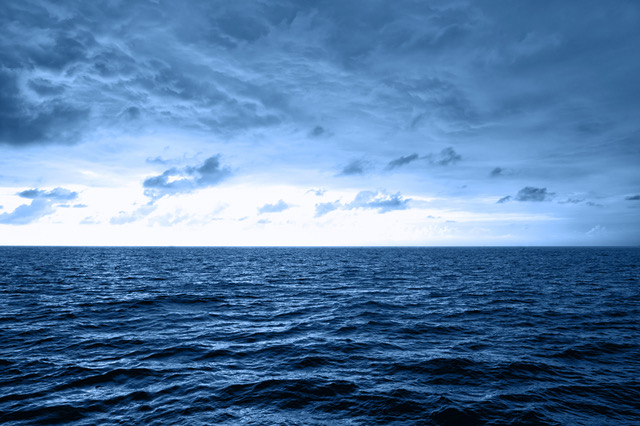
-
 Trump purges national security team after meeting conspiracist
Trump purges national security team after meeting conspiracist
-
More work for McIlroy even with two wins before Masters

-
 Trump hopeful of 'great' PGA-LIV golf merger
Trump hopeful of 'great' PGA-LIV golf merger
-
No.1 Scheffler goes for third Masters crown in four years

-
 Where Trump's tariffs could hurt Americans' wallets
Where Trump's tariffs could hurt Americans' wallets
-
Trump says 'very close to a deal' on TikTok

-
 Trump tariffs on Mexico: the good, the bad, the unknown
Trump tariffs on Mexico: the good, the bad, the unknown
-
Postecoglou denies taunting Spurs fans in Chelsea defeat

-
 Oscar-winning Palestinian director speaks at UN on Israeli settlements
Oscar-winning Palestinian director speaks at UN on Israeli settlements
-
With tariff war, Trump also reshapes how US treats allies

-
 Fernandez fires Chelsea into fourth as pressure mounts on Postecoglou
Fernandez fires Chelsea into fourth as pressure mounts on Postecoglou
-
South Korea court to decide impeached president's fate

-
 Penguin memes take flight after Trump tariffs remote island
Penguin memes take flight after Trump tariffs remote island
-
E.T., no home: Original model of movie alien doesn't sell at auction

-
 Italy's Brignone has surgery on broken leg with Winter Olympics looming
Italy's Brignone has surgery on broken leg with Winter Olympics looming
-
Trump defiant as tariffs send world markets into panic

-
 City officials vote to repair roof on home of MLB Rays
City officials vote to repair roof on home of MLB Rays
-
Rockets forward Brooks gets one-game NBA ban for technicals

-
 Pentagon watchdog to probe defense chief over Signal chat row
Pentagon watchdog to probe defense chief over Signal chat row
-
US tariffs could push up inflation, slow growth: Fed official

-
 New Bruce Springsteen music set for June 27 release
New Bruce Springsteen music set for June 27 release
-
Tom Cruise pays tribute to Val Kilmer

-
 Mexico president welcomes being left off Trump's tariffs list
Mexico president welcomes being left off Trump's tariffs list
-
Zuckerberg repeats Trump visits in bid to settle antitrust case

-
 US fencer disqualified for not facing transgender rival
US fencer disqualified for not facing transgender rival
-
'Everyone worried' by Trump tariffs in France's champagne region

-
 Italy's Brignone suffers broken leg with Winter Olympics looming
Italy's Brignone suffers broken leg with Winter Olympics looming
-
Iyer blitz powers Kolkata to big IPL win over Hyderabad

-
 Russian soprano Netrebko to return to London's Royal Opera House
Russian soprano Netrebko to return to London's Royal Opera House
-
French creche worker gets 25 years for killing baby with drain cleaner

-
 UK avoids worst US tariffs post-Brexit, but no celebrations
UK avoids worst US tariffs post-Brexit, but no celebrations
-
Canada imposing 25% tariff on some US auto imports

-
 Ruud wants 'fair share' of Grand Slam revenue for players
Ruud wants 'fair share' of Grand Slam revenue for players
-
Lesotho, Africa's 'kingdom in the sky' jolted by Trump

-
 Trump's trade math baffles economists
Trump's trade math baffles economists
-
Gaza heritage and destruction on display in Paris

-
 'Unprecedented crisis' in Africa healthcare: report
'Unprecedented crisis' in Africa healthcare: report
-
Pogacar gunning for blood and thunder in Tour of Flanders

-
 Macron calls for suspension of investment in US until tariffs clarified
Macron calls for suspension of investment in US until tariffs clarified
-
Wall St leads rout as world reels from Trump tariffs

-
 Mullins gets perfect National boost with remarkable four-timer
Mullins gets perfect National boost with remarkable four-timer
-
Trump tariffs hammer global stocks, dollar and oil

-
 Authors hold London protest against Meta for 'stealing' work to train AI
Authors hold London protest against Meta for 'stealing' work to train AI
-
Tate Modern gifted 'extraordinary' work by US artist Joan Mitchell

-
 Mexico president welcomes being left off Trump's new tariffs list
Mexico president welcomes being left off Trump's new tariffs list
-
Tonali eager to lead Newcastle back into Champions League

-
 Lesotho hardest hit as new US tariffs rattle Africa
Lesotho hardest hit as new US tariffs rattle Africa
-
Stellantis pausing some Canada, Mexico production over Trump auto tariffs

-
 Rising odds asteroid that briefly threatened Earth will hit Moon
Rising odds asteroid that briefly threatened Earth will hit Moon
-
Italy reels from Brignone broken leg with Winter Olympics looming


New giant tortoise species found in Galapagos after DNA study
A new species of giant tortoise has been discovered in the Galapagos after DNA testing found animals living on one island had not yet been recorded, Ecuador's environment ministry said.
Researchers compared the genetic material of tortoises currently living on San Cristobal with bones and shells collected in 1906 from a cave in the island's highlands and found them to be different.
The 20th-century explorers never reached the lowlands northeast of the island, where the animals live today, and as a result, almost 8,000 tortoises correspond to a different lineage to what was previously thought.
"The species of giant tortoise that inhabits San Cristobal Island, until now known scientifically as Chelonoidis chathamensis, genetically matches a different species," the ministry said Thursday on Twitter.
Galapagos Conservancy said in a newsletter that the Chelonoidis chathamensis species is "almost certainly extinct" and that the island had in fact been home to two different varieties of tortoise, one living in the highlands and another in the lowlands.
Located in the Pacific about 1,000 kilometers (600 miles) off the coast of Ecuador, the Galapagos Islands are a protected wildlife area and home to unique species of flora and fauna.
The archipelago was made famous by British geologist and naturalist Charles Darwin's observations on evolution there.
There were originally 15 species of giant tortoise on the islands, three of which became extinct centuries ago, according to the Galapagos National Park.
In 2019, a specimen of Chelonoidis phantastica was found on Fernandina Island more than 100 years after the species was considered extinct.
The study by researchers from Newcastle University in Britain, Yale in the United States, the American NGO Galapagos Conservancy and other institutions was published in the scientific journal Heredity.
They will continue to recover more DNA from the bones and shells to determine whether the tortoises living on San Cristobal, which is 557 kilometers long, should be given a new name.
pld/atm/ybl/je/cwl
Une étude ADN a révélé que les tortues géantes qui vivent sur l'île de San Cristobal, aux Galapagos, correspondent à une nouvelle espèce qui n'avait pas encore été recensée par la science, a déclaré jeudi le ministère équatorien de l'Environnement.
"L'espèce de tortue géante qui peuple l'île San Cristobal, jusqu'à présent connue scientifiquement sous le nom de Chelonoidis chathamensis, correspond génétiquement à une espèce différente", a indiqué le ministère sur Twitter.
Des chercheurs de l'université de Newcastle, de l'université de Yale, de l'ONG américaine Galapagos Conservancy et d'autres institutions ont comparé le matériel génétique de tortues vivant actuellement à San Cristobal, une île de 557 km de long, avec des os et des carapaces recueillis en 1906 par l'Académie des sciences de Californie dans une grotte située sur les hauts plateaux de l'île.
Au moment de la description de Chelonoidis chathamensis, le groupe d'expéditionnnaires qui a recueilli les ossements de la grotte n'avait jamais atteint les basses terres du nord-est de San Cristóbal, où vivent aujourd'hui les tortues.
De ce fait, "les scientifiques ont conclu que les près de huit mille tortues qui existent aujourd'hui à San Cristobal pourraient ne pas être des Chelonoidis chathamensis, mais correspondre à une toute nouvelle lignée", a expliqué le ministère de l'Environnement dans un communiqué.
Galapagos Conservancy a ajouté dans un bulletin que le groupe Chelonoidis chathamensis des hauts plateaux de San Cristobal "est presque certainement éteint" et que l'île abritait non pas une mais deux variétés différentes de tortues, l'une vivant dans les hauts plateaux et l'autre dans les basses terres.
L'étude, qui a été publiée dans la revue scientifique Heredity, se poursuivra par la récupération de davantage d'ADN sur les os et les carapaces afin de déterminer si les tortues vivantes de San Cristobal doivent recevoir un nouveau nom.
Il y a des millions d'années, San Cristobal était peut-être divisée en deux par la mer et chaque partie avait sa propre espèce de chélonien. Mais lorsque le niveau de l'eau a baissé, les deux îles ont fusionné, tout comme leurs tortues.
Les Galapagos, site du patrimoine mondial doté d'une flore et d'une faune uniques au monde, doivent leur nom aux tortues géantes. Il y avait à l'origine 15 espèces de chéloniens géants dans l'archipel, dont trois se sont éteintes il y a des siècles, selon le Parc national Galapagos (PNG).
En 2019, un spécimen de Chelonoidis phantastica a été retrouvé sur l'île Fernandina après plus de 100 ans où l'espèce était considérée comme éteinte.
N.Walker--AT
